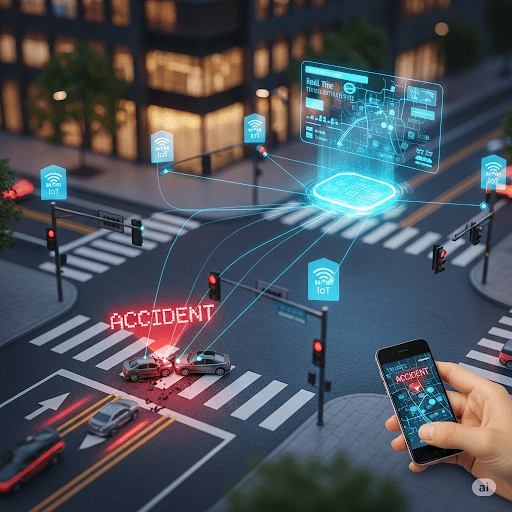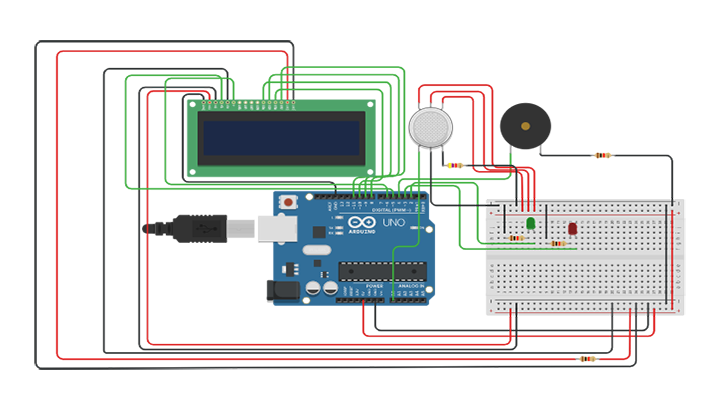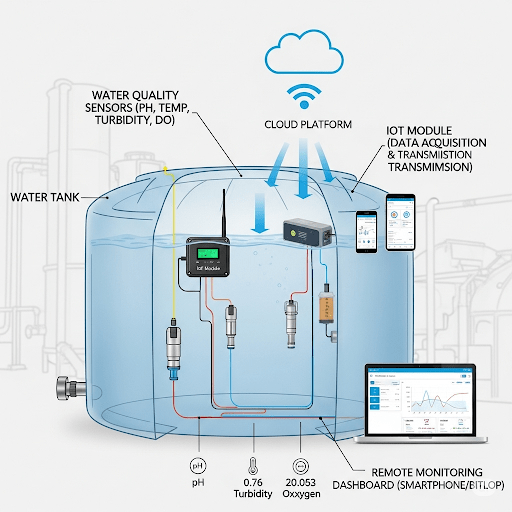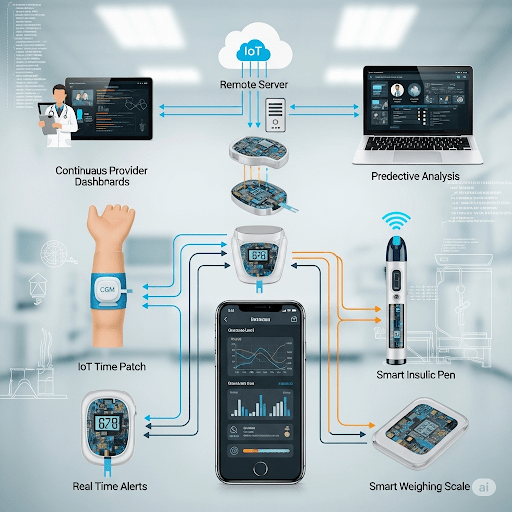Arduino-Powered Proximity Sensing Radar
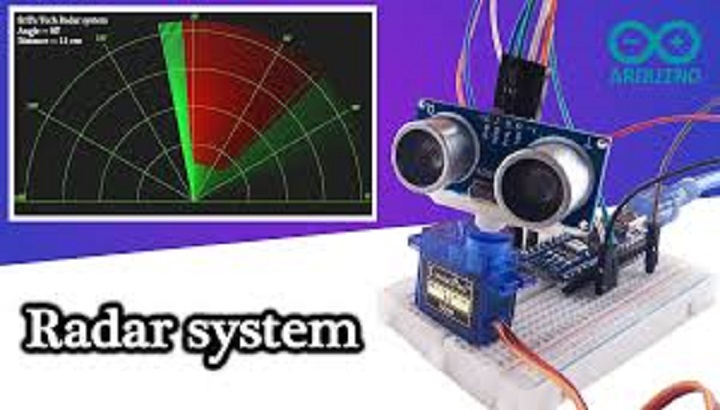
Components and Functions: Arduino Microcontroller: Serves as the central control unit for processing data from the ultrasonic sensor and controlling the output devices. Ultrasonic Sensor: Measures the distance to objects by emitting ultrasonic waves and detecting the reflected signals. Servo Motor: Rotates the ultrasonic sensor to scan the surrounding area, creating a radar-like sweeping effect. LCD Display: Provides a visual interface to display distance readings and object positions. LED: Lights up to indicate the presence of an object within a critical range. Buzzer: Emits a sound to alert when an object is detected within a predefined proximity. Jumpers: Used to connect the components to the Arduino board for communication and power supply.
Operation: The ultrasonic sensor, mounted on the servo motor, rotates to cover a 180-degree area. As it sweeps, it continuously measures distances to nearby objects. The Arduino processes these measurements to determine if an object is within a critical range. If an object is detected, the Arduino triggers the LED and buzzer to provide immediate feedback. The distance and position of the object are displayed on the LCD screen for real-time monitoring.
Applications: This radar system can be used for various applications, including proximity alert systems, obstacle detection in robotics, and basic surveillance systems. It provides a foundation for understanding radar technology and can be expanded with additional features for more complex tasks.
In summary, this project integrates multiple components to create a functional radar system, demonstrating the principles of distance measurement, data processing, and output control using Arduino.
Related project idea for free
Smart car Parking System in Kigali - Rwanda
This dissertation examines an IoT-based smart car parking system used in Rwanda. Rwanda is a nation that has to be intelligent in a variety of areas, including agriculture, health, and transportation, particularly in terms of parking. People are affected by a variety of parking issues, including...
Read more>>Accident Detection Based On IoT
Road accidents frequently result in damage, injuries, or fatalities and happen unexpectedly and without warning. Through the elimination of the time lag between the accident's incidence and the initial medical emergency, this research aims to lower the fatality rates following an accident. A mach...
Read more>>IoT based toxic gas detection and level of landfill - Case study: NDUBA LANDFILL
As the world's population expands, so does the amount of waste. Most landfills release harmful pollutants into the air and into the homes of those who live nearby. Effective landfill management is necessary to protect both the environment and human health and wellbeing. The findings of the litera...
Read more>>IoT based remote monitoring of water quality in tanks - Case of WASAC
Water is regarded as a basic requirement for humans in their daily lives. It is required in a variety of settings, including the home, the workplace, the manufacturing sector, the hospital, and others. The quality of the water needs to be closely monitored on a regular basis and effectively if on...
Read more>>Design and implementation of an IoT-Based diabetes remote monitoring system
Real-time diabetes remote monitoring uses Internet of Things (IoT) technology to measure blood glucose levels, heart rate, blood pressure, and body temperature. Typically, a self-management system for diabetes is designed to detect the presence of particular molecules, particularly hyperglycemia,...
Read more>>

